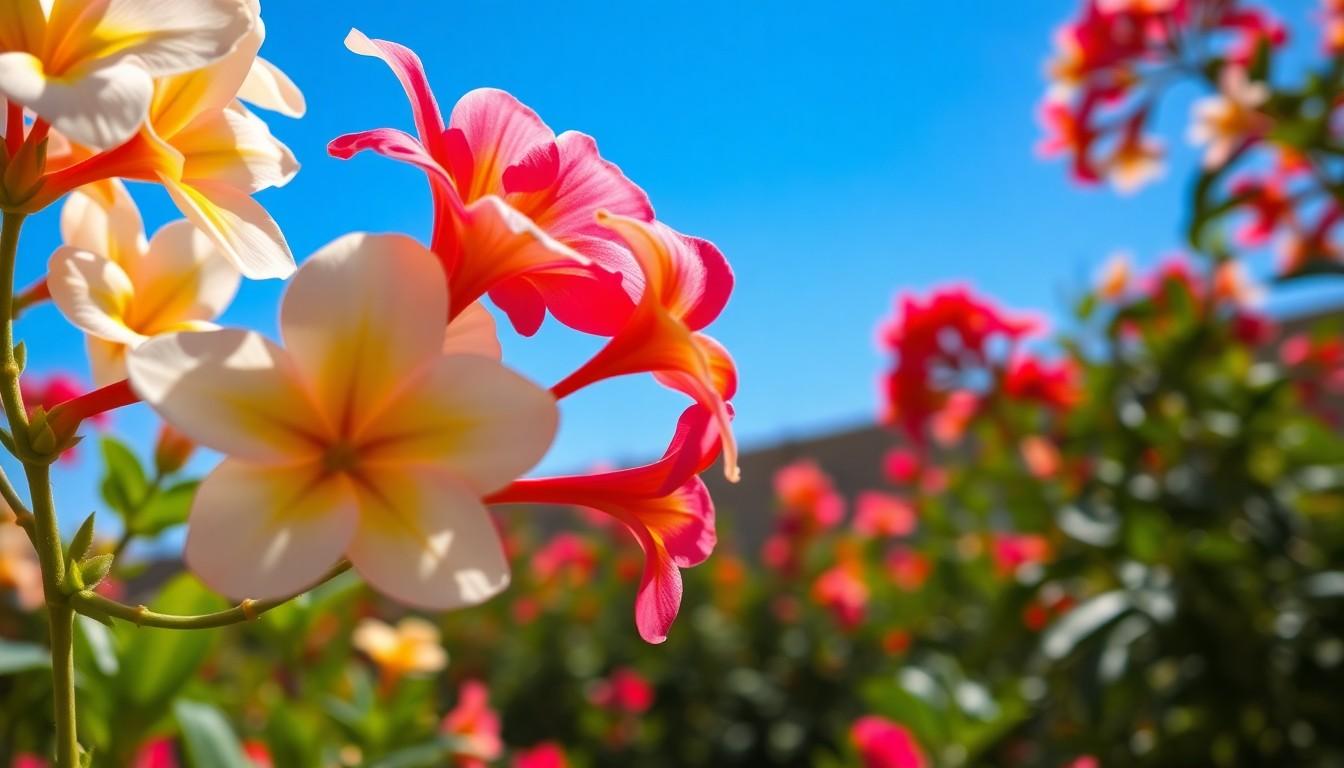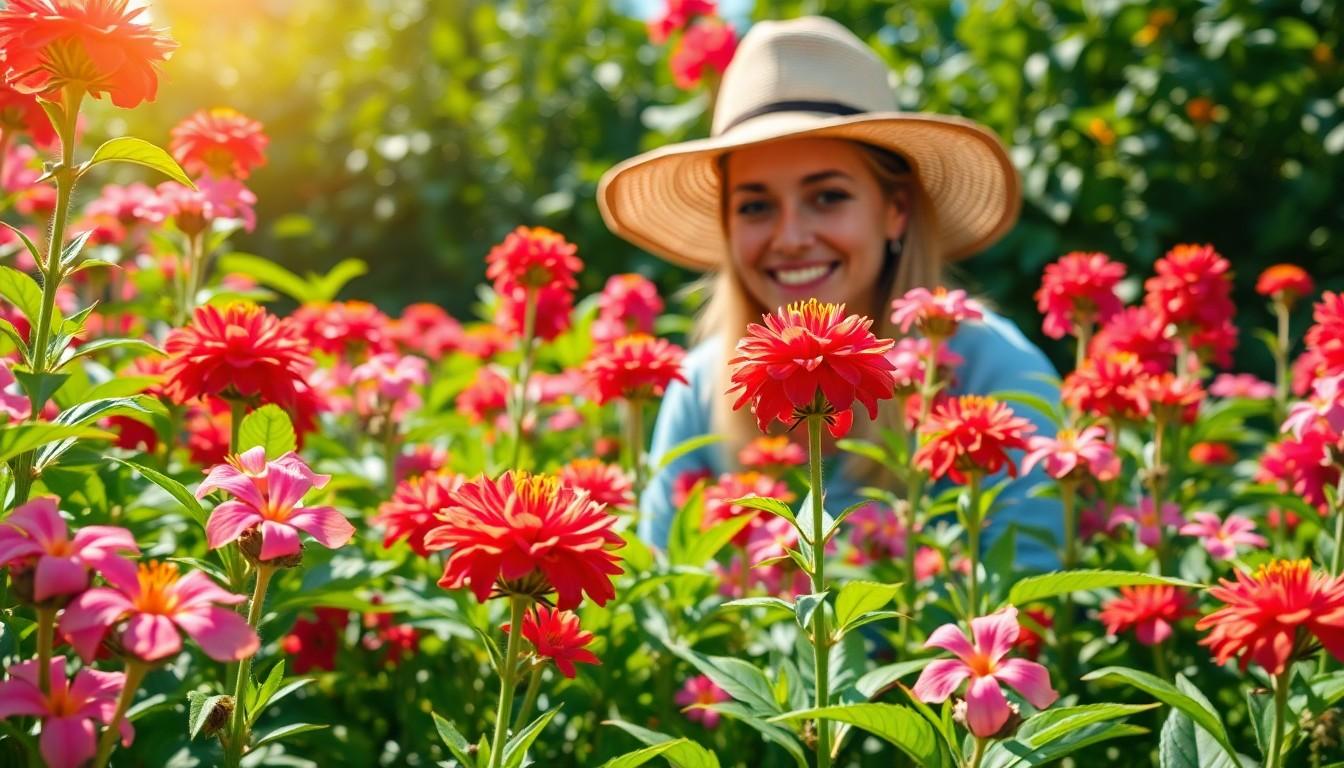Physical Address
304 North Cardinal St.
Dorchester Center, MA 02124
Physical Address
304 North Cardinal St.
Dorchester Center, MA 02124

Imagine stepping into a world where vibrant colors dance on your skin and nature shows off its artistic flair. Henna flowers, with their delicate petals and rich history, are more than just a pretty sight; they’re the secret ingredient for stunning body art and celebrations. These little beauties have been enchanting cultures for centuries, and it’s easy to see why.
Henna flowers come from the Lawsonia inermis plant, best known for its leaves, which produce a rich dye used in body art. These blossoms appear in various shades, including white, yellow, and red, enhancing gardens and cultural ceremonies alike. The flower’s aromatic qualities add another dimension, attracting pollinators such as bees and butterflies.
Ceremonial significance marks henna flowers in various cultures. Weddings often incorporate these blooms, symbolizing joy and auspiciousness. During festivals, people adorn themselves with henna designs, celebrating tradition and artistry. In many regions, it’s common for individuals to wear fresh henna flowers in their hair, further showcasing their beauty.
The cultivation of henna flowers requires specific environmental conditions. Warm temperatures, well-drained soil, and ample sunlight encourage optimal growth. Harvesting is typically done by hand, preserving the delicate nature of the blooms. Gardeners often appreciate its low maintenance needs, making it popular in home gardens.
In addition to their visual allure, henna flowers possess medicinal properties. Traditional medicine utilizes them for their anti-inflammatory and antimicrobial effects. Infusions of the flowers may help soothe skin irritations, illustrating their role in holistic practices.
Overall, henna flowers embody both beauty and cultural richness. Their vibrant presence enhances celebrations while offering practical benefits. As such, they hold a significant place in the hearts of those who cherish their enchanting qualities.

Cultivating henna flowers involves specific practices to ensure healthy growth and vibrant blooms.
Temperatures between 70°F and 90°F promote optimal growth for henna flowers. Well-drained sandy or loamy soil supports root development and prevents waterlogging. Full sunlight enhances the flower’s color and aromatic qualities. Regular watering, especially during dry spells, helps maintain plant health. The plant thrives in low to moderate humidity, which encourages flowering. Fertilization with organic compost boosts nutrient content in the soil, further enhancing flower production.
Harvesting henna flowers occurs typically during the late spring to summer months. Experienced growers identify the right time by observing the petal color change and fragrance intensity. Picking individual flowers ensures the longevity of the plant, allowing continued blooming. Hand harvesting minimizes damage to adjacent blooms and foliage. Once collected, flowers require proper storage in cool, dry conditions to maintain freshness. These practices ensure a quality yield, ready for use in celebrations and traditional applications.
Henna flowers possess a variety of uses, spanning traditional practices to modern innovations. Their natural properties contribute to multiple applications.
Henna flowers have been significant in cultural rituals for centuries. People often incorporate them into wedding ceremonies, symbolizing happiness and fertility. Families use these blooms in festive decorations, enhancing the atmosphere with their vibrant colors. Furthermore, henna’s aromatic qualities play a role in creating a pleasant environment during gatherings. Traditional healing practices also embrace henna flowers. Herbalists utilize them to prepare remedies believed to alleviate various ailments.
Modern applications of henna flowers reflect their versatility. Artisans blend them into cosmetics, capturing their color and fragrance for beauty products. Body art enthusiasts use henna to create intricate designs, which serve as temporary tattoos. Additionally, some culinary artists incorporate henna flowers in dishes for visual appeal and subtle flavor. These blooms also find their way into essential oils, utilized in aromatherapy. Sustainability advocates promote henna as a natural dye alternative in textiles and crafts, emphasizing eco-friendly options.
Henna flowers provide various advantages for beauty and health. Their use extends beyond artistic expression into practical applications.
Henna flowers offer numerous benefits for hair health. Many people use them to promote hair growth and strengthen hair strands. These flowers contain natural properties that condition hair, making it smoother and shinier. When applied, henna acts as a natural dye, delivering a rich, vibrant color without harmful chemicals. Moreover, henna helps prevent dandruff and maintains a healthy scalp. Regular application can enhance overall hair texture, keeping it nourished and manageable.
Henna flowers contribute positively to skin health. Their antifungal and antibacterial properties make them effective for various skin conditions. Applying henna can soothe irritation and reduce inflammation, ensuring a calm complexion. Additionally, henna acts as a natural dye for temporary body art, allowing individuals to express creativity without chemical exposure. Natural antioxidants present in henna flowers also work to protect the skin from environmental stressors, promoting a youthful appearance. Regular use can result in healthier, more radiant skin.
Henna flowers truly embody a unique blend of beauty and cultural significance. Their vibrant colors and aromatic qualities enhance celebrations while offering practical benefits in beauty and health. As these delicate petals continue to inspire artistic expression and traditional practices, they remain an essential element in various cultures.
The versatility of henna flowers, from body art to herbal remedies, showcases their enduring appeal. Whether used in festive decorations or as a natural dye, they symbolize joy and auspiciousness, making them a cherished presence in gardens and ceremonies alike. Embracing henna flowers not only enriches personal experiences but also connects individuals to a rich tapestry of history and tradition.